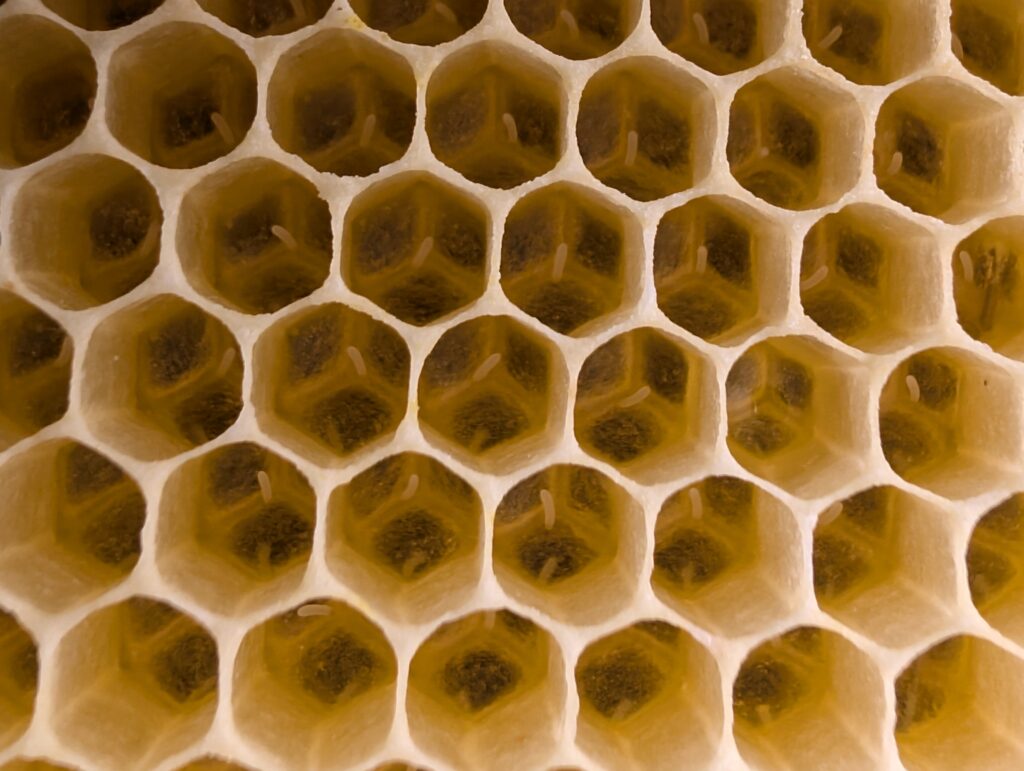Welcome back to the Actual Honey miniseries where we discuss the different types of honey bee! This week we’re going to discuss the mother of all bees: the queen.
The queen begins life growing up in a cell much larger than a worker’s or drone’s, and consumes the scientific marvel that is royal jelly. She emerges after just 16 days, which is much sooner than workers (21 days) and drones (24 days), but she compensates for her relatively short development time by living for up to 5 years, which is a staggering duration compared with workers and drones. Long live the queen!
A queen is raised by workers from a colony in need of a new ruler and she wholeheartedly believes that she is the true heir to the throne. Once she has emerged from her XL cell, she will eliminate any rivals – fighting to the death if necessary – so that she can become the undisputed champion and reign supreme.
After the glitz and glamour of the ceremonies is over and the crown is firmly atop her head, the queen must turn her attention to her responsibilities: Every bee in a colony comes from an egg laid by the queen. For the population to survive, the queen must start producing young. A virgin queen cannot lay fertilised eggs, so she must make a rare public appearance. She flies to the local Drone Congregation Area and waits for the gents to battle it out for the privilege of mating with her. After accepting 10-20 drones, she will have enough sperm stored to last her entire adult life of egg-laying. And lay she does! A queen can lay up to 2,000 eggs in a single day. 2,000 eggs in a single day.

The only other occasion the queen might step outdoors is when she has been so prolific with her laying that the population is bursting out of its hive. If there’s no longer enough space, the practical thing to do is to move to a bigger home. The queen will be put on a diet to help her achieve a more aerodynamic figure and, once she’s ready, the workers will escort the queen outside and they will swarm. Eventually the family will find a suitable place of residence and make it their own, painting it with propolis and constructing hexagonal furniture. After settling in, the queen is allowed to eat as much as she likes and again responds to her constant feeling of broodiness by laying her bodyweight in eggs every day.
Indeed, the queen is so busy bringing about new life that she has no time to feed herself, clean herself or head outside for bathroom breaks. For this reason, she has a cluster of attentive girls with her at all times who take care of her every need. Another of their vital tasks is to make sure everyone in the colony can smell the queen. Her matriarchal pheromones are highly influential, with the ability to reassure her subjects, determine how grouchy or serene they feel and to ensure a constant awareness of her sovereignty. After all, she is not only the colony’s mother but also their ruler.

HOWEVER, should the queen fail in some way, the colony will immediately get to work replacing her. This is a common outcome for a queen when she reaches around 3 years of age and both her pheromone and egg production slows down. The workers will forcibly replace her using the extreme but efficient tactic of killing her! Their preferred method is to surround her so tightly that she overheats and dies. Naturally, such a shocking news story spreads quickly and within 4 hours everyone in the family will have heard about their mother’s death. R.I.P. Your Majesty.